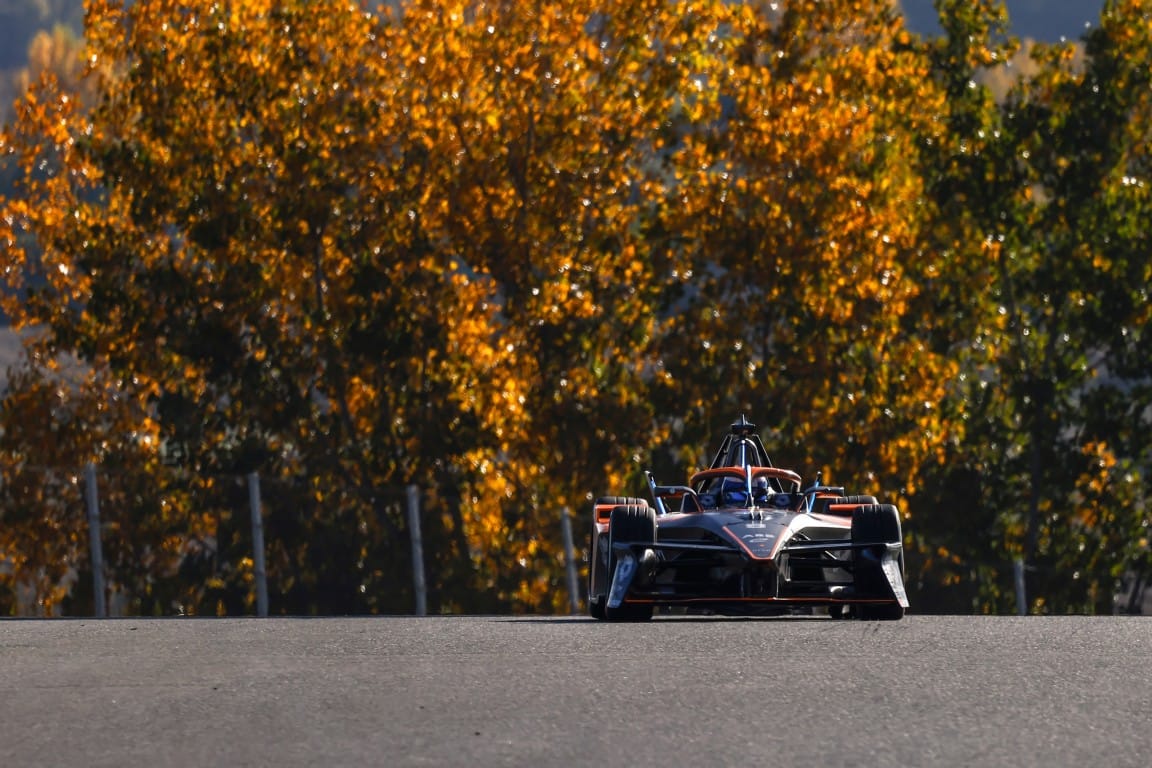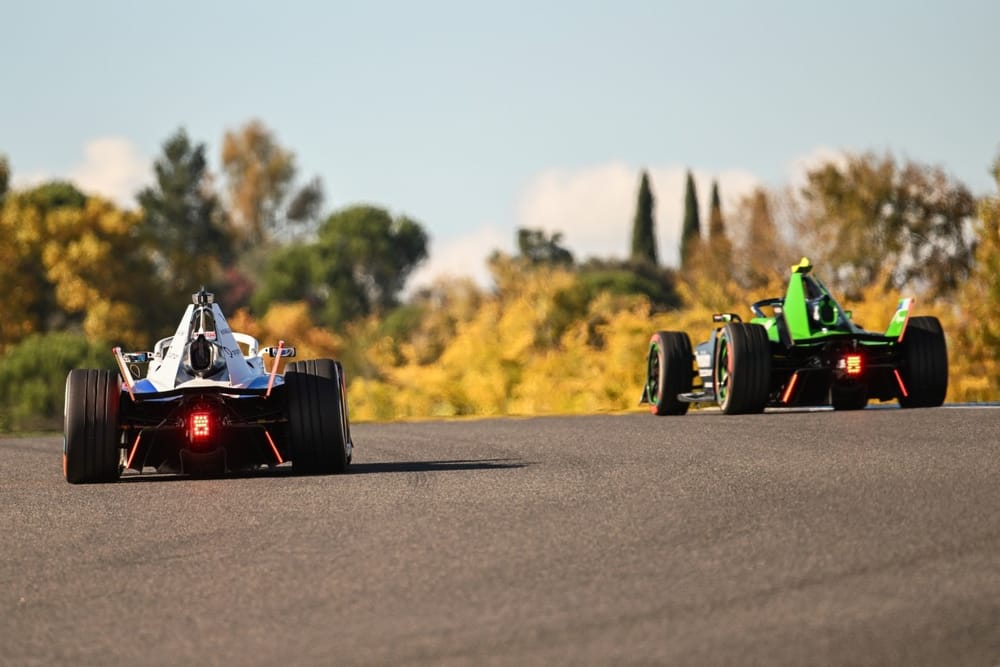Formula E and the FIA are seriously weighing up whether to introduce an element of competitiveness in the annual rookie test.
Jarama in March will host the event next season, as teams will be obliged to field a pair of drivers that have not competed in a live session within the all-electric world championship.
The Race has learned that initial feelers have been put out to teams and manufacturers on whether a structure that approximately mirrors the current Formula E qualifying system of group qualifying and then duel face-offs between drivers can form at least part of the test.
This initiative would likely see the planned six hours of testing split by a session allocated to a qualifying-style competition.
Formula E is known to have wanted to liven up the rookie test for some time, with a feeling that the six hours themselves generated little in the way of fan interest, with few media staying the extra day to witness the event.
Speaking to The Race about the possible introduction of such a plan, Nissan’s race director Dorian Boisdron said that teams were “all facing a challenge in the series, which is bringing new talents in".
“Experience is key in Formula E - let's say drivers we are used to seeing on the grid are getting older and older now," Boisdron mused.
“If you make a projection on the four years of Gen4, at some point, we all know we will need to bring on board new talents. So, this is what all the teams are striving to do.”
Part of Boisdron’s rationale comes from the perceived lack of opportunity to assess the overall performances of rookies in the kind of high-stress situations that make up so much of the Formula E weekend.

The advent of pack racing in Gen3 mixed with the specific skills prioritised by racing on temporary or street tracks have meant teams are putting a premium on experience and established drivers.
But recent breakthroughs by drivers - in particular, what multiple podium visitor Taylor Barnard achieved last season - have concentrated thinking across the paddock in looking more closely at Formula 2 and Formula 3 drivers for the upcoming Gen4 era.
“The he more we can get possibilities to put the rookie drivers in a kind of real context of Formula E, like the qualifying format, which is a bit particular, then the better maybe,” added Boisdron.
“The more we can get in terms of proper experience and make a strong assessment of the rookie driver, the better it will be and the easier it will be for the rookie and for the team to be comfortable, to commit together and enable new talents in the series.”
But enthusiasm for integrating a competitive element into the rookie test is not universal.
Looking ahead to Jarama next March, Andretti team boss Roger Griffiths has warned that it may not be beneficial for teams.
“From what we learned from Jarama, it's a great track. I’m really looking forward to seeing our cars back there and in particular the rookies,” said Griffiths.
“But personally, I think the jury's out on whether adding an element of competition into the test is the right thing to do.
“I mean, these guys are already competitors in their own respective championships, whether it’s F2 or F3, and perhaps that's where the racing should be done.
“The rookie test should be considered as a learning opportunity to work in a professional motorsport environment, working with the manufacturers, working with their engineers. Perhaps that’s what the focus should be on, preparing people.
“Let them do the competition bit somewhere else, when it's not at our expense, so to speak. We'll see, we'll wait and see what Formula E has in mind. I'm circumspect about whether it's the right thing to do.”



